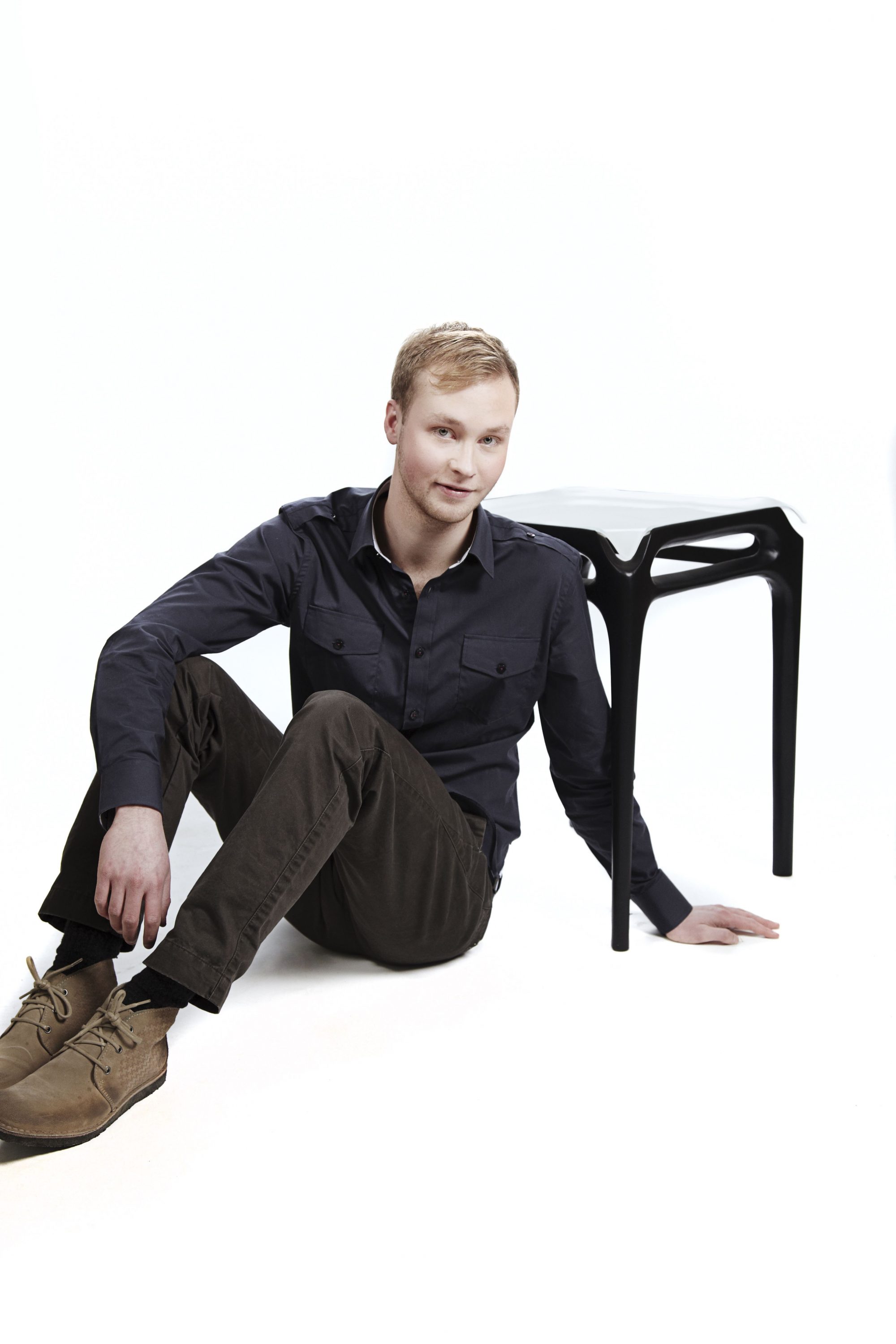In nature, says Robert Faulkner, there’s no waste. So when it came to designing Chute, a side table and serving tray, “I didn’t want to have elements of the table that were purely esthetic. So I tried to make everything so that it would have a function.”
He already had his concept envisioned: “I could see the use for a table that, if you’re bringing something in from the kitchen, like a tea set, you can put it all on the tray and bring it to a social setting.” But could he add beauty to the functionality of the piece?
The designer could have just put notches in the table edges so a hand could slip in and lift the tray, “but that’s disturbing everything else. There’s a continuous line, and I don’t want to wreck that.” Instead, the slumped glass top is removed by any of four points that chute off the wood corners, making it accessible and giving the furniture its name.
The tray, made with Starphire glass for a milky appearance that complements the black paint, was first digitally designed and then moulded in a kiln with the help of Panache Ceramics and Glass. But the table – made with eastern birch because of its tight, strong grains – was hand-sculpted by Faulkner, who’s most comfortable with wood. The wide slits carved into the apron function as handles to carry the table, but also strengthen the braces like the two bones in your forearm.
In an earlier incarnation, the sculptural glass just sat on the wood, “like an afterthought.” For continuity, he ran a blade through it and created channels for the glass to nest in. “The wood holds it, but the glass looks like it’s pouring out.”
Photography by Aaron Pedersen/3 Ten
Hair and makeup by Nicola Gavins
Like this content? Get more delivered right to your inbox with Ed. Home & Style
Discover the cool things we’re obsessing over.
